You’re probably here because you want to answer a simple question: How much do laundromats make? People who search for this information are either thinking about becoming a laundromat business owner or researching the industry for school or an industry report.
We talked to Dave Menz, the Laundromat Millionaire, to understand how much you can really make owning laundromats. He owns a total of four laundromats and earns a combined $1.8 million per year.
With his insights, we’ll answer four main questions:
- How much revenue does the average laundromat make?
- What are laundromat average profit margins?
- What expenses does the average laundromat have?
- What can be done to maximize laundromat profitability?
We’ll also teach you about the industry and provide you with the information you need to decide whether a laundromat business is right for you.
Keep reading or click any of the links below to jump to the section that interests you:
How much do laundromats make?
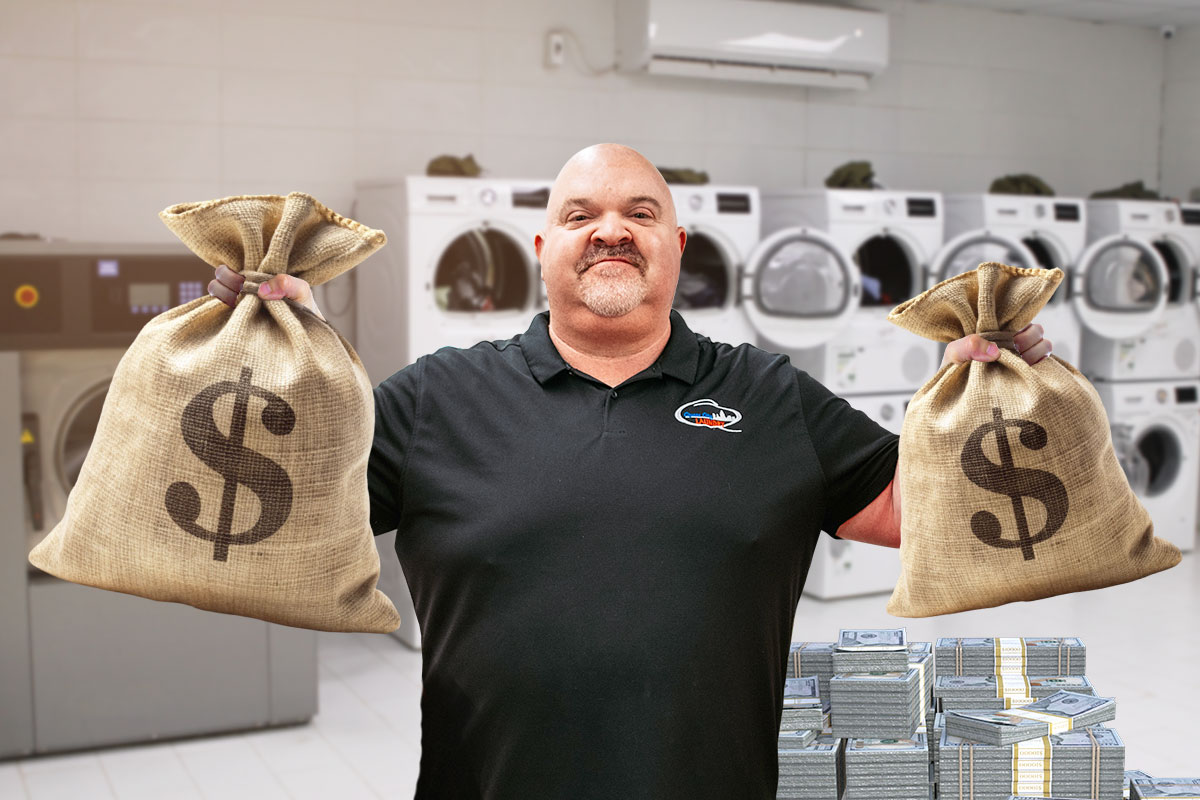
When you open a laundromat, you should assume that it will make around $300K in annual revenue. You can add additional sources of revenue by adding vending machines, laundry delivery, and other services.
Dave told us:
However, too many business owners focus on making essential repairs and collecting money from their machines. Reimagining this business model can help you provide more value to your customers.
The laundromat business isn’t fully passive income. Even once your laundromat is up and running, it’s still only semi-passive or flexible at best.
How much do laundromats make a year?
According to Dave Menz, the average laundromat makes around $300K in revenue per year. Depending on the location, competition, number of machines, and additional services, a laundromat business may make more or less than this estimate.
How much money can a laundromat make in a month?
The average laundromat makes approximately $25,000 per month, but the exact amount monthly will vary. When you look at the number of days in the month, you should be looking for revenue figures similar to the ones below:
| Month | Days | Average Revenue |
| January | 31 | $25,479.52 |
| February | 28 | $23,013.76 |
| February (Leap Year) | 29 | $23,835.68 |
| March | 31 | $25,479.52 |
| April | 30 | $24,657.60 |
| May | 31 | $25,479.52 |
| June | 30 | $24,657.60 |
| July | 31 | $25,479.52 |
| August | 31 | $25,479.52 |
| September | 30 | $24,657.60 |
| October | 31 | $25,479.52 |
| November | 30 | $24,657.60 |
| December | 31 | $25,479.52 |
Your earnings may also be affected by seasonal trends. A laundromat with a high percentage of college students could see notable drops in revenue during summer and winter breaks.
How much does a laundromat make a day?

On any given day, the average laundromat will make $821.92 in revenue. You can expect weekends and after 6 p.m. to be the busiest times. During standard work hours, the laundromat may be slow unless you offer services like wash and fold services, pickup, or delivery.
Case Study: Queen City Laundry
Dave Menz started Queen City Laundry in 2010. He told us:
Dave worked nights and weekends while he was still working. He kept his full-time job until he opened two more locations and could replace his regular wages with the laundromat profits. Dave explained:
His primary services are:
- Self-serve laundry
- Drop-off wash and fold
- Pickup and delivery laundry
- Dry cleaning
- Commercial laundry services
Currently, Dave has four laundromats and a net worth of $3.8 million. When he buys laundromats, he looks for locations he can fix up. His goal is to improve upon existing services to make them more appealing to local clients.
For one of those laundromat locations, Dave owns the real estate through a separate company and rents the land to his laundromat to make additional profit.
Learn more about Dave’s strategies in his interview below:
He’s currently working on upgrading from the coin laundry industry to a full-service laundromat that accepts cards and PhonePay.
Dave also teaches an in-depth laundromat business course through the UpFlip Academy. You’ll gain access to over four hours of lessons and nine templates to help you launch and scale a profitable laundromat business.
Are laundromats profitable?
The average U.S. laundromat makes a 20% to 30% profit margin, assuming they don’t have debt. According to Dave, top-performing laundromats can operate with 50% margins or higher.
A laundromat’s return on investment changes based on:
- Routine business expenses: Expect to spend up to $10K per month on routine expenses such as rent, inventory, and utilities.
- Competitors: You’ll need lower prices to stay more competitive in areas with other laundromats. Becoming a full-service laundromat also allows you to charge higher rates.
- Age of equipment: Maintenance costs will be higher for older machines.
- Location: Businesses cost more to operate in areas with higher property values and cost of living.
- Services: Offering full-service options for washing and delivery will increase your revenue and reduce how much wages cost as a percentage of your overall expenses.
- Taxes: Local and state sales taxes can reach as high as 13%.
- Pricing: Coin laundromats usually charge between $1.50 and $4 per wash. However, you can charge by the pound if customers are willing to pay for full service.
- Payroll: For most laundromat owners, payroll is their biggest recurring expense even at minimum wage.
Laundromat Business Operating Expenses

You should expect the following operating costs:
- Rent
- Water
- Gas
- Electricity
- Inventory
- Insurance
- Laundromat owner salary
- Maintenance costs
- Employee wages
- Taxes
- Debt payments
- Payment processor fees
- Wi-Fi
We’ll take a closer look at operating costs in the sections below.
Rent
Your rent is a fixed cost that has to be paid every month to continue running your laundromat. Rent in commercial spaces is normally charged per square foot. The average retail space costs approximately $23 per square foot on an annual basis.
For a 1,000-square-foot space, that converts to $1,916.67 monthly, or $2.63 per hour, if you’re trying to calculate your break-even cost for a 24-hour laundromat.
Water

For laundromats, one of the biggest operating costs is the water bill. According to Wallingford Sales Company, a laundromat business uses over 40 gallons per load.
That means each machine could use 19,200 gallons of water per month at a cost of $0.00295 per gallon. At those rates, your water bill should be around $56.64 per machine each month.
Gas
If you’re using gas water heaters and dryers, you’ll need to pay the utility costs for the gas you use. Expect to spend $0.95 per therm (100,000 BTUs).
The average laundromat has between 40 and 100 washers and dryers. Washers can consume between 16,000 and 140,000 watts per hour, while dryers may consume between 72,000 and 500,000 watts per hour, according to UGI Energy Link. Each watt is approximately 3.41 BTUs.
Based on those numbers, your monthly gas bill could be between $4,820 and $12,050.
Electricity

Washers are normally electric and use at least 2,400 watts per hour, according to Jackery. At a rate of $0.1339 per kWh, that means 40 to 100 washers would be between $9,563.67 and $23,909.18 for a 24-hour laundromat each month.
This doesn’t include other utility costs such as lights, computers, vending machines, and TVs, but they’ll be nominal compared to the cost of washing machines.
Inventory
You’ll also want various types of single-serve laundry detergent, fabric softener, dryer sheets, and other laundry supplies. You can purchase these from Amazon or through your distributors. You might also want convenience store products like snacks and drinks to either sell from behind the counter or in vending machines.
The costs will vary depending on the brands you select and the size of the laundromat. Laundromat owners should start by ordering enough for 100% capacity for a week and then adjust accordingly based on inventory monitoring.
Laundromat Business Insurance
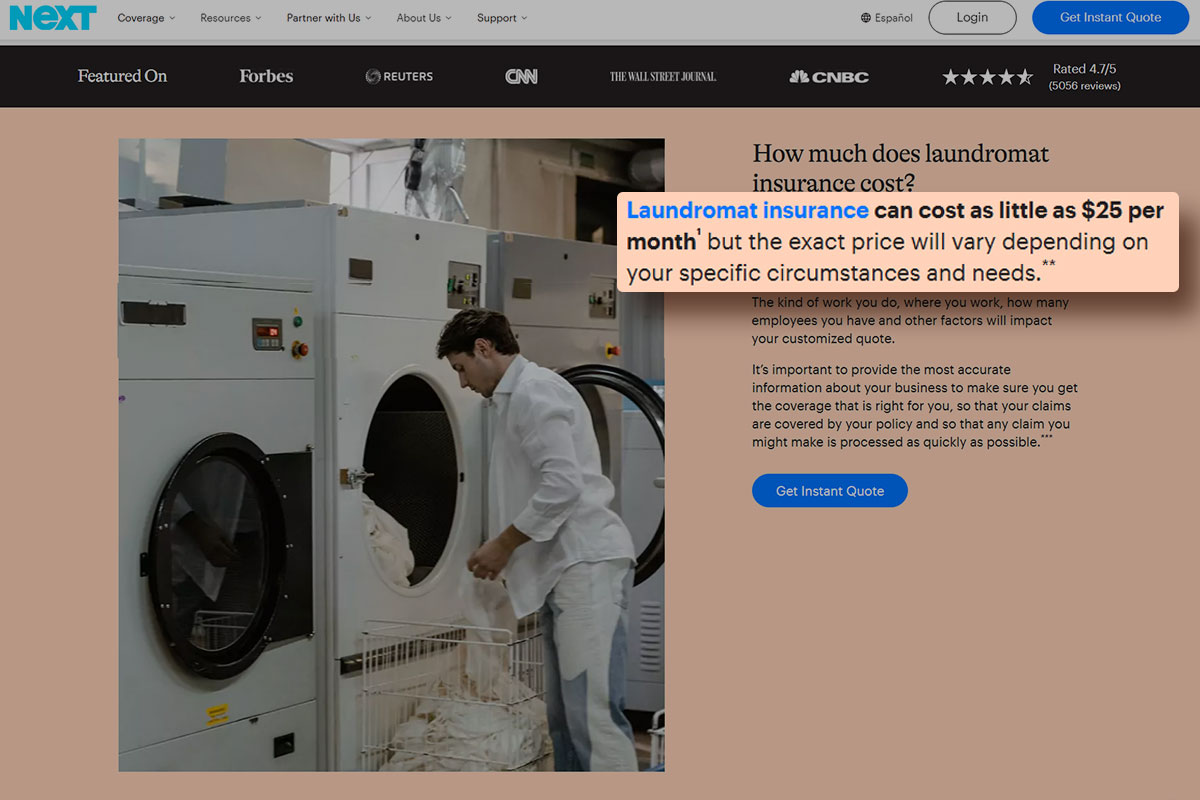
Next Insurance says that laundromat owners should expect to pay for a business owner’s policy (BOP) and workers’ compensation insurance. The average business owner spends $227 a month on their BOP and under $112 per month for workers’ compensation.
We suggest requesting bids through Simply Business to find the best price across multiple insurance companies.
Laundromat Owner Salary
Laundromat businesses often pay their business owner a salary out of their monthly revenue. If you choose to do this, or you’re required to because you run an S corp, you need to pay yourself competitive wages.
According to the U.S. Bureau of Labor Statistics, personal service managers make an average of $62,980 per year, or $5,248.33 monthly. This would be considered the minimal legally defensible owner salary if you own an S corp. The rest of your profits can be paid out as dividends at a lower tax rate.
Maintenance Costs
You should budget for annual maintenance for your washers, dryers, water heaters, and HVAC systems. They need to be checked at least once every year, and you should expect between $50 and $150 per hour plus parts.
Based on my experience in HVAC, you should expect at least 30 minutes per appliance. For 40 to 100 washers and dryers, a water heater, and an HVAC system, that adds up to between $2,050 and $15,150 annually. Dave told us:
Employee Wages
Unless you and your family are the only ones working at the laundromat, you’ll need to pay employees. The average laundromat employee makes $31,550 per year, or an hourly rate of $15.17.
For a 24-hour laundromat facility, you’ll need at least five employees.
| Business Hours | Monthly Expenditure |
| 24 hours, 7 days a week | $11,286.48 |
| 18 hours, 7 days a week | $8,464.86 |
| 12 hours, 7 days a week | $5,643.24 |
| 8 hours, 5 days a week | $2,669.92 |
As you can see, the cost of employees plus utilities can easily equal $20K or more a month in expenses, which is why many people run unattended laundromats.
Taxes

You’ll need to pay any state and local taxes, payroll (if applicable), and the federal income tax on your profits. I’d assume you need at least 21% of profits for taxes. It makes sense to calculate these expenses monthly to help reduce the burden of tax season.
Debt Payments
If you have any financing, you’ll need to include that. Most laundromats will want to keep it under 10% of revenue. That means less than $30,000 annually, or $2,500 per month.
Payment Processor Fees

Laundromats that accept cards make 17% to 22% more than coin operated machines. Accepting cards also reduces maintenance time and repairs by up to 70%.
Making the switch involves upfront costs of $550 to $2,100. Ongoing monthly fees are typically around 2.9% of transactions.
When you adjust the average $300,000 annual revenue to monthly revenue and add 22%, you get monthly revenues of $30,500. That means you should expect $884.50 in monthly credit card processing fees.
Wi-Fi
You’ll want to offer internet, which you should assume is between $200 and $500 per month for commercial service.
Revenue Minus Expenses Breakdown
I used the average revenue for the low revenue. For the high revenue, I estimated 20 uses of 100 washers and dryers at $5 per load for each machine for a laundromat operating 24 hours every day of the year.
| Item | Low | High |
| Revenue | $300,000 | $7,300,000 |
| Rent | $23,000 | $59,000 |
| Water | $27,187 | $67,968 |
| Gas | $57,840 | $144,600 |
| Electricity | $57,382 | $143,455 |
| Inventory | $5,000 | $62,000 |
| Insurance | $936 | $4,068 |
| Business Owner Salary | $0 | $62,980 |
| Maintenance Costs | $2,050 | $15,150 |
| Employee Wages | $0 | $135,438 |
| Payment Processing Fees | $0 | $10,614 |
| Wi-Fi | $0 | $6,000 |
| Operational Expenses | $173,395.20 | $789,122 |
| Debt Payments | $0 | $730,000 |
| Taxes | $36,413 | $1,213,984 |
| Cash Flow | $136,982 | $4,566,894 |
Laundromat FAQ
Next, we’ll discuss some common questions people have while researching the laundry industry.
Is a laundromat a good investment?

Yes, a laundromat is a vital community resource that generates lots of cash flow and can have profit margins up to 50%. In addition, the business offers lots of flexibility and has the ability to become a passive income play.
You can also use the assets from a laundromat to invest in more small businesses. Dave told us:
How to start a laundromat
Starting a laundromat is as simple as following these steps:
- Choose your laundry services.
- Write a business plan.
- Build relationships with distributors.
- Get financing.
- Find a location.
- Get permits and insurance.
- Set up your business.
- Develop a marketing strategy.
Learn more about how to open a laundromat.
How much to buy a laundromat?
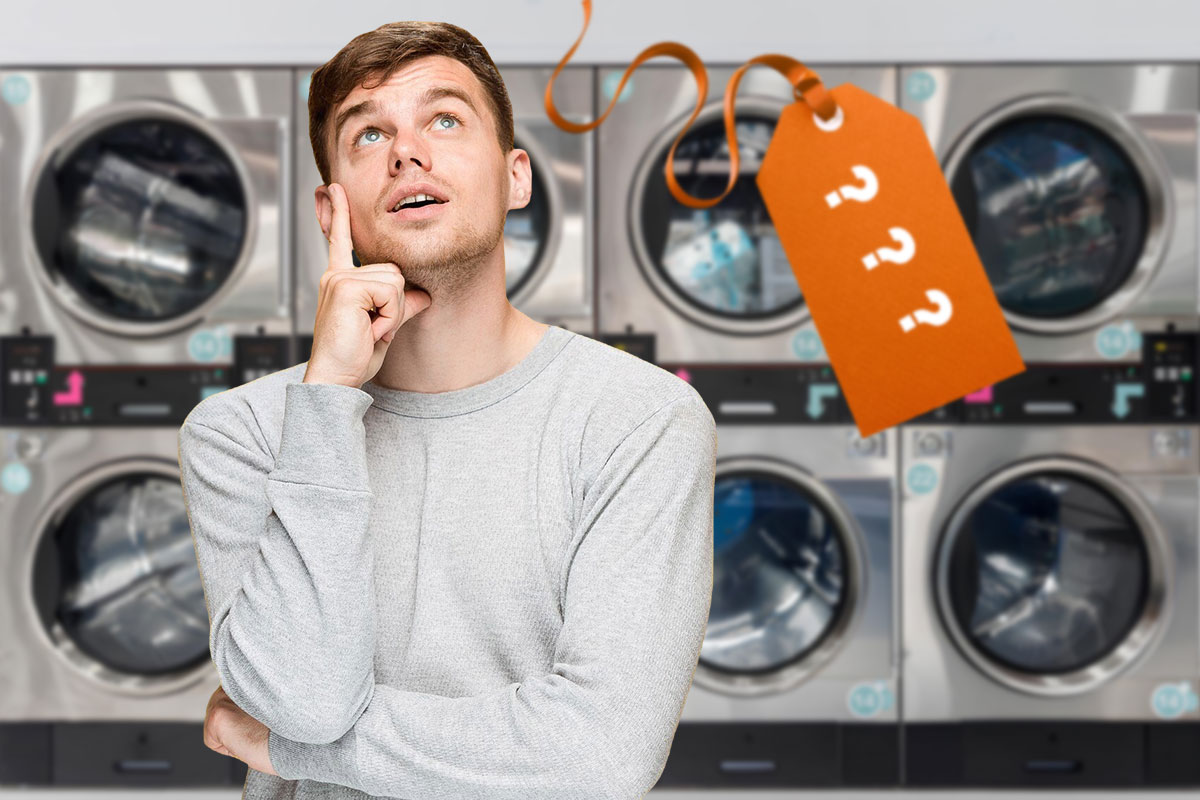
Buying a laundromat will normally cost between $50,000 and $1 million depending on the number of machines, condition of the laundromat, revenue, and location. Dave explained:
What is the laundromat success rate?
Laundrylux says that 95% of laundromats are successful enough to make it to the five-year mark. This makes laundromats four times more successful than the average small business.
How much do laundromat owners make?
It isn’t uncommon for laundromat owners to make $100K in business owner earnings. If you provide yourself a salary, it should be around $65K. Then you have profits, which are typically between 20% and 30% on $300K in revenue.
So how much do laundromat owners make? Somewhere between $65K and $165K is pretty normal, but Dave says that successful laundromats can reach profit margins of up to 50%.
Using that number and his revenue figures, it’s a reasonable assumption that Dave is making approximately $150K in take-home pay per laundromat.
How do laundromats make money?
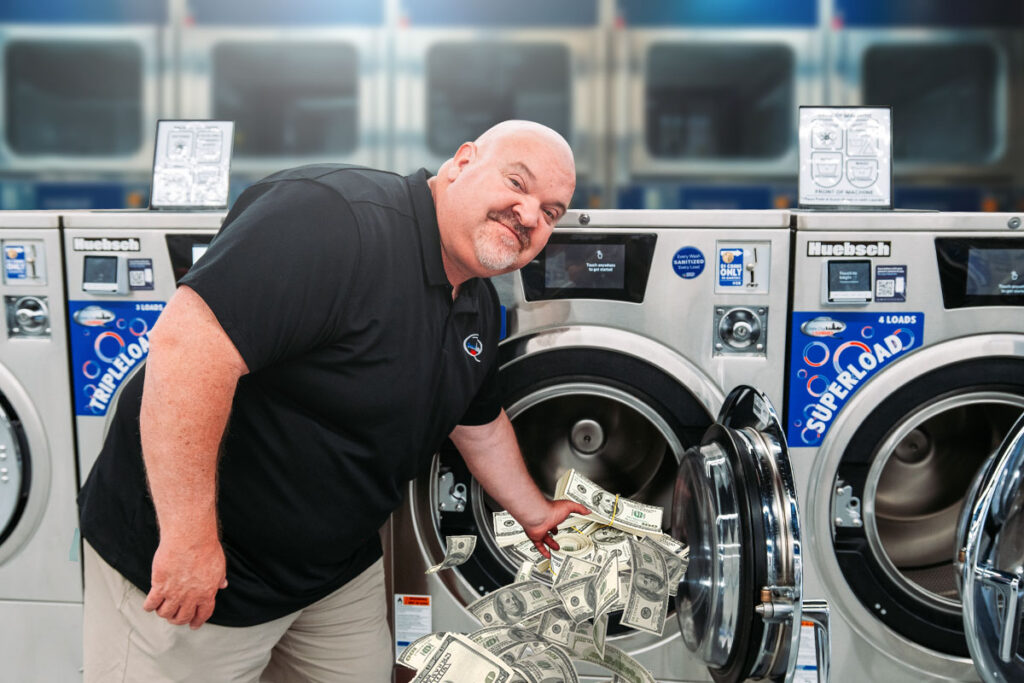
You can earn a number of revenue streams as a laundromat owner. Some of the common revenue streams for laundromat businesses include:
- Self-service laundry
- Pickup and delivery services
- Wash and fold services
- Vending machines
- Dry cleaning
- Slot machines (if gambling is legal)
Let’s look at how much money you can make owning a laundromat that offers these services.
Self-service laundry
When people think about laundromat profits, the primary revenue streams that come to mind are self-service laundromats with coin operated washers and dryers. Dave told us:
Pickup and delivery services
Offering additional services like pickup and delivery simplifies your customers’ lives, increases laundromat profits, and helps you improve operating efficiency. Dave charges $2.49 per pound with a $40 minimum for one-time service or $2.37 per pound for routine delivery services.
This service requires a vehicle, an employee to drive it, and commercial vehicle insurance, which will increase your startup costs and ongoing expenses.
Wash and fold services

These services are similar to the pickup and delivery service, but the customer drops off the laundry. This costs less because there aren’t the additional costs of driving to pick up laundry.
The wash and dry package is $1.29 per pound with a 16-pound minimum. Other packages are 10-pound minimums and come out to at least $20.
These services can increase your profits dramatically. Let’s assume you have 40 pounds of laundry, which isn’t uncommon for a family to have.
For self-service, it takes two loads in the washer at $5 a load and two in the dryer at the same price. That means your laundromat makes $20. Alternatively, at $1.29 per pound, the same loads would be $51.60.
Vending machines
According to Adam Hill, an expert vending machine entrepreneur:
That means you could make an extra $50K per year just by providing a snack machine and drink machine for your customers. However, this will increase your startup costs by $10K to $30K and increase your inventory costs.
Dry cleaning
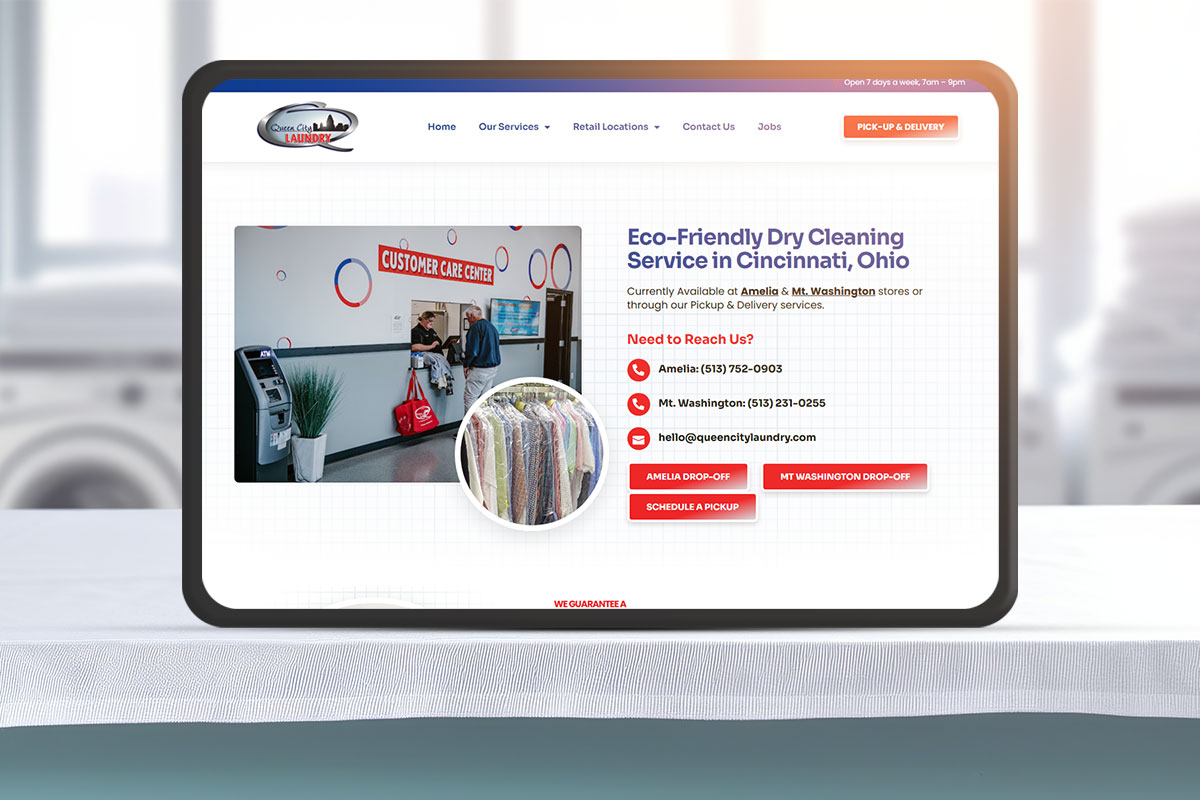
Some laundromats also offer dry cleaning services. Queen City Laundry charges between $3.57 and $40 depending on the type of item. This service will increase your startup costs and ongoing laundromat cost because it requires specialized equipment.
Slot machines (if gambling is legal)
Gambling profits can be as high as 10% to 20% with lots of money put in, but it’s a highly regulated field. There are some operators who will supply machines and share profits with host locations.
Closing
By now, you know that the average laundromat makes $300K annually with 20% to 30% profit margins. We also explained how much owners make, the expenses that go into running a laundromat, and how to start a laundromat.
Lastly, we discussed the success rate of laundromats and the various services you can offer to make more money when you start a laundromat business.
Are you ready to start a laundromat?
Don’t forget to check out our laundromat business course to learn more.





